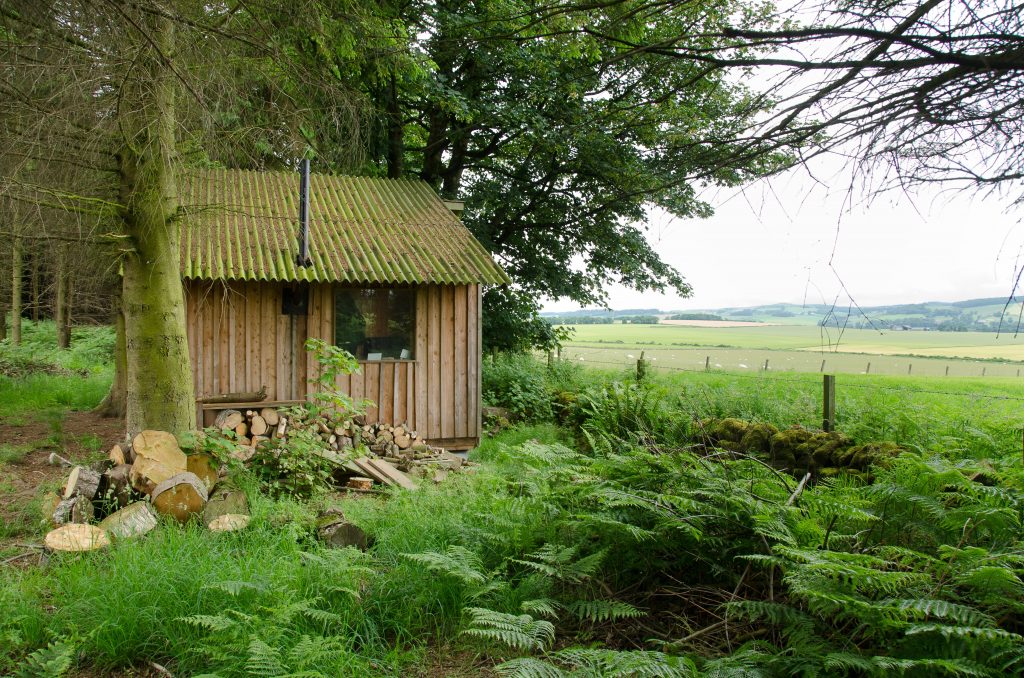It’s a simple concept: a little hut in the woods; a place to spend some time outdoors; reconnect with the real world. There are hytte all over Scandinavia and northern Europe, so why not here?
It’s a simple building: made from local timber; maybe self-built; easily removed at the end of its life.
And it’s one simple step to create the policy framework: add a concise definition of a hut to Scottish Planning Policy and watch the verbose hutting movement take physical form.
Off we go then.  We recently submitted a planning application for a pilot project by Reforesting Scotland, the group that’s done more than anyone to promote hutting in Scotland, through its 1000 Huts Campaign. Working with Forestry Commission Scotland on a site at Carnock Wood by Saline in Fife, Reforesting Scotland plans 13 huts, one of which is intended for educational use.
We recently submitted a planning application for a pilot project by Reforesting Scotland, the group that’s done more than anyone to promote hutting in Scotland, through its 1000 Huts Campaign. Working with Forestry Commission Scotland on a site at Carnock Wood by Saline in Fife, Reforesting Scotland plans 13 huts, one of which is intended for educational use.
We’ve tried to keep it simple. We helped Reforesting Scotland set out information for this kind of development in their guidance for “New Hutting Developments”, published in 2016. We’ve now sought to create a template through this planning application to make it easier for others to follow. The application documents can be viewed here.
A quick look at the application file online and you’ll realise that simplicity only goes so far. The planning system hasn’t handled many hutting applications in recent years, as there are so few huts in Scotland and barely any have been built in recent times. Planning authorities need to be confident that they aren’t opening the door to inappropriate development. They want to know what the huts will look like. They want to know about any potential impacts on ancient woodland, habitat and protected species, road safety and landscape setting, flooding and core paths. They want to know how people will travel to the huts, how they will use them, how the site will be managed.
Sometime soon, a simpler planning application process may be possible. Once a body of hutting evidence has emerged, we can all campaign for a lighter-touch approach to the planning process, for this lighter-touch form of development. If Simplified Planning Zones are acceptable for housing and employment, then why not huts?
For now, this seems like a big step forward. There’s more work to be done but the planning application takes us closer to making huts available for people who want them. And we know lots of people want them….
